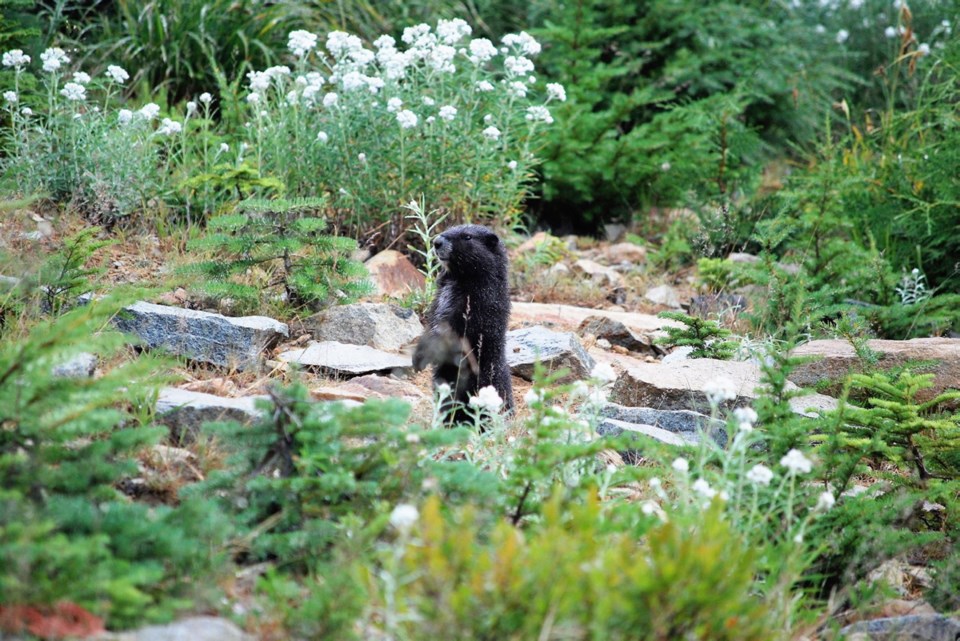Captive breeding appears to have saved the Vancouver Island marmot, but genetic problems may lie hidden in the population, says a Vancouver Island University biologist.
Prof. Jamie Gorrell is embarking on a five-year study to determine if the marmot recovery program, breeding animals in zoos and introducing offspring into the wild, has led to a wild population whose individuals are more closely related than is healthy.
“By losing that genetic diversity, you can end up with higher problems down the road,” said Gorrell from Nanaimo.

Gorrell is the recipient of a five-year grant of $24,000 per year from the federal Natural Sciences and Research Council to study the genetics of the Vancouver Island marmot, now numbering about 200 and living on hills near Nanaimo.
The Vancouver Island marmot, chocolate brown with a white nose, is a close relative of the mainland hoary marmot and the woodchuck of eastern Canada. Found only on Vancouver Island, it makes its home on alpine meadows and has been dubbed Canada’s most endangered animal.
Back in 2003, the Vancouver Island marmot’s wild population crashed from about 300 to 30 individuals. In response, a recovery plan was established. Individuals were captured and transported to zoos in Toronto and Calgary to be bred in captivity, with offspring subsequently released in the wild.
Gorrell is now asking questions about what captive breeding has done to the genetics of the wild population and what that might mean for the future.
If a new, genetically triggered disease enters the population, for example, is the likelihood some individuals will enjoy genetic immunity minimized because of a reduction in the population’s diversity?
Also, will marmots bred in a zoo inherit the genetics they need to be successful breeders in the wild? Zoo conditions, with their regular meals, comfortable temperatures and lack of predators, are far removed from life in the wild.
Even genetics that determine basic physiological issues, such as good digestion, ability to put on fat, dealing with periodic food scarcity and successful hibernation could be lost with captive breeding.
Gorrell said some marmots in zoos don’t even bother hibernating, and the captive-bred marmots introduced to nature are less likely to survive than their wild-bred counterparts.
He said captive breeding might even be skewing the act of mating.
The approach in the zoos, he said, is to put a male and a female together until the sexual act occurs. But that doesn’t take into account natural mate selection, which might have genetic implications for the Vancouver Island marmot population.
He said hoary marmots and woodchucks females will mate with a number of males, leading to litters where siblings can be sired by different fathers, and an increase in genetic diversity even within a single family.
“We know that genetic diversity is the basic unit of selection when it comes to evolution,” he said. “If you lose varieties in the genes, that limits the potential for natural selection.
“So if a new disease comes out and all the marmots have the same genetic variance, then they may all be susceptible,” said Gorrell. “More diversity means it’s more likely some may be resistant.”



